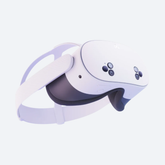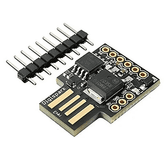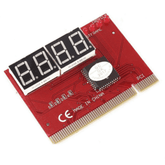AR & VR in School Robotics Labs
Summary
The landscape of education is undergoing a profound transformation, driven by technological advancements that are redefining the boundaries of the classroom.
At the heart of this evolution are immersive technologies like Augmented Reality (AR) and Virtual Reality (VR), which are moving from the realm of science fiction into practical application.
In fields like robotics engineering, where hands-on experience is paramount, the integration of AR and VR is proving to be a game-changer, offering students unprecedented opportunities to engage with complex concepts in a dynamic and interactive way.
Modern robotics has evolved significantly from its origins in industrial automation. Today, it represents a convergence of mechanical, electrical, and computer engineering, demanding a new generation of engineers who are not only technically proficient but also creative problem-solvers.
The introduction of AR & VR in school robotics labs is a critical step in preparing students for the challenges of this rapidly advancing field.
By creating simulated environments and overlaying digital information onto the real world, these technologies bridge the gap between theoretical knowledge and practical application, making robotics education more accessible, engaging, and effective than ever before.

AR & VR in Education
Augmented Reality (AR) and Virtual Reality (VR) are no longer niche technologies reserved for gaming and entertainment. They have emerged as powerful educational tools that are reshaping how students learn and interact with information.
Augmented reality in education enriches the real-world environment by overlaying computer-generated images, text, and data, accessible through devices like smartphones and tablets.
This allows students to visualize complex concepts in 3D, bringing abstract ideas to life in a tangible way. For instance, a student can point their device at a textbook diagram of a robotic arm and see a fully animated 3D model appear on their screen, which they can manipulate and inspect from all angles.
On the other hand, virtual reality in education offers a fully immersive experience by transporting students to completely simulated environments using VR headsets for schools.
This technology enables them to conduct experiments in a safe and controlled virtual space, visit places they couldn't otherwise go, and practice skills without real-world consequences.
In the context of a robotics lab with AR & VR Technology, this could mean programming a virtual robot to navigate a hazardous environment or collaborating with classmates in a shared virtual space to build a complex machine.
These immersive learning in schools experiences captivate students' attention and foster a deeper understanding of the subject matter.
How AR & VR Enhance Robotics Learning
The integration of AR & VR in school settings, particularly in robotics labs, offers a multitude of benefits that enhance the learning experience.
These technologies provide a powerful platform for AR and VR robotics learning, transforming traditional robotics education into a more dynamic and interactive process.
By creating virtual labs for students, schools can overcome the limitations of physical resources and provide every student with access to advanced equipment and scenarios.
The primary ways in which AR and VR enhance robotics learning include:
- Visualization of Complex Mechanisms: Robotics involves intricate mechanical and electronic systems that can be difficult to understand from 2D diagrams. AR and VR allow students to visualize these components in 3D, exploring how they fit together and function in a way that is not possible with traditional methods. This 3D learning in robotics labs helps to demystify complex engineering concepts.
- Safe and Repeatable Experimentation: Building and testing robots can be expensive, and mistakes can lead to damaged equipment. Interactive robotics simulations in a virtual environment allow students to experiment without fear of failure. They can test different coding approaches, simulate various environmental conditions, and run trials as many times as needed to perfect their designs.
- Bridging Theory and Practice: AR can overlay instructions, schematics, and data directly onto a physical robot, guiding students through the assembly and programming process. This creates a seamless link between theoretical knowledge and hands-on application, reinforcing learning and building confidence. These augmented learning experiences are invaluable in a technical field like robotics.
- Remote and Collaborative Learning: VR environments enable students and teachers to connect and collaborate regardless of their physical location. This is particularly beneficial for schools with limited access to robotics experts or for students participating in remote learning programs. It also facilitates collaborative projects, where teams can work together in a shared virtual space to design and build robots.
Hands-On Activities with AR & VR in Robotic Lab
The true power of an AR/VR in Robotic Lab is realized through hands-on activities that engage students and allow them to apply their knowledge in practical ways. These activities can range from simple introductory exercises to complex, project-based challenges that mirror real-world engineering problems. The use of AR/VR educational tools opens up a vast array of possibilities for robotics lab activities for students.
Here are some examples of hands-on activities that can be implemented in a robotics lab with AR & VR technology:
- Virtual Robot Assembly: Using educational robotics kits in a virtual environment, students can learn the fundamentals of robot construction. They can select components, follow on-screen instructions, and assemble a virtual robot from the ground up. This activity teaches them about the different parts of a robot and how they work together, without the need for expensive physical kits for every student.
- AR-Guided Programming: With an AR application, students can use a physical robot and see a visual representation of the code they are writing. As they develop their AR VR coding in schools skills, the AR interface can show the path the robot will take or highlight the specific sensors and motors that are being activated by their code. This immediate feedback helps to solidify their understanding of programming logic.
- Simulated Robotics Challenges: Students can participate in virtual robotics competitions and training, where they program their robots to perform specific tasks, such as navigating a maze, picking up and moving objects, or even simulating a search and rescue mission. These simulations can be made increasingly complex, providing a scalable challenge for students of all skill levels.
- Interactive System Diagnostics: In an advanced activity, students can use an AR interface to diagnose and repair a malfunctioning virtual or physical robot. The AR overlay can highlight faulty components, provide technical specifications, and guide them through the troubleshooting process, teaching them valuable problem-solving skills.
Benefits for Students: Skills Gained Through AR & VR
The integration of AR and VR in robotics lab technology in schools offers more than just an engaging way to learn about robotics. It equips students with a wide range of skills that are essential for success in the 21st-century workforce.
This approach to STEM education with AR and VR fosters both technical competencies and soft skills, preparing students for the future of robotics education and beyond.
Key skills gained by students include:
- Technical Proficiency: Students develop a deep understanding of robotics principles, including mechanics, electronics, and programming. They gain hands-on experience with the tools and technologies that are shaping the future of engineering and automation.
- Problem-Solving and Critical Thinking: The challenges presented in virtual and augmented environments require students to think critically and develop creative solutions. They learn to analyze problems, test hypotheses, and iterate on their designs to achieve their goals.
- Collaboration and Communication: Many AR and VR applications are designed for collaboration, allowing students to work together on complex projects. This fosters teamwork, communication, and the ability to contribute to a collective goal, skills that are highly valued in any professional setting.
- Enhanced Student Engagement: The immersive and interactive nature of AR and VR captures students' attention and makes learning fun. This increased student engagement through AR/VR leads to better retention of information and a greater enthusiasm for learning, which is a cornerstone of innovative learning methods.
Conclusion
The integration of Augmented and Virtual Reality into school robotics labs marks a pivotal moment in the evolution of STEM education. These technology-enabled classrooms are breaking down the barriers between the digital and physical worlds, creating a new frontier of learning that is more interactive, accessible, and effective.
By providing students with immersive, hands-on experiences, we are not just teaching them about robotics; we are inspiring the next generation of innovators, engineers, and problem-solvers.
The continued development of STEM labs in India and around the world, equipped with these advanced technologies, will be crucial in preparing students for the challenges and opportunities of the future.
The journey of robotics engineering is one of continuous innovation, and the educational tools we use must evolve alongside it. AR and VR are not just fleeting trends; they represent a fundamental shift in how we can deliver education.
As we embrace these technologies, we empower students to move beyond the theoretical and engage with the practical, turning abstract concepts into tangible creations.
The future of robotics education is here, and it is immersive, interactive, and filled with limitless possibilities.








